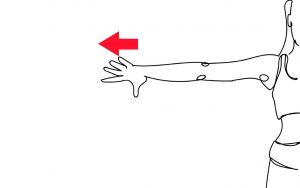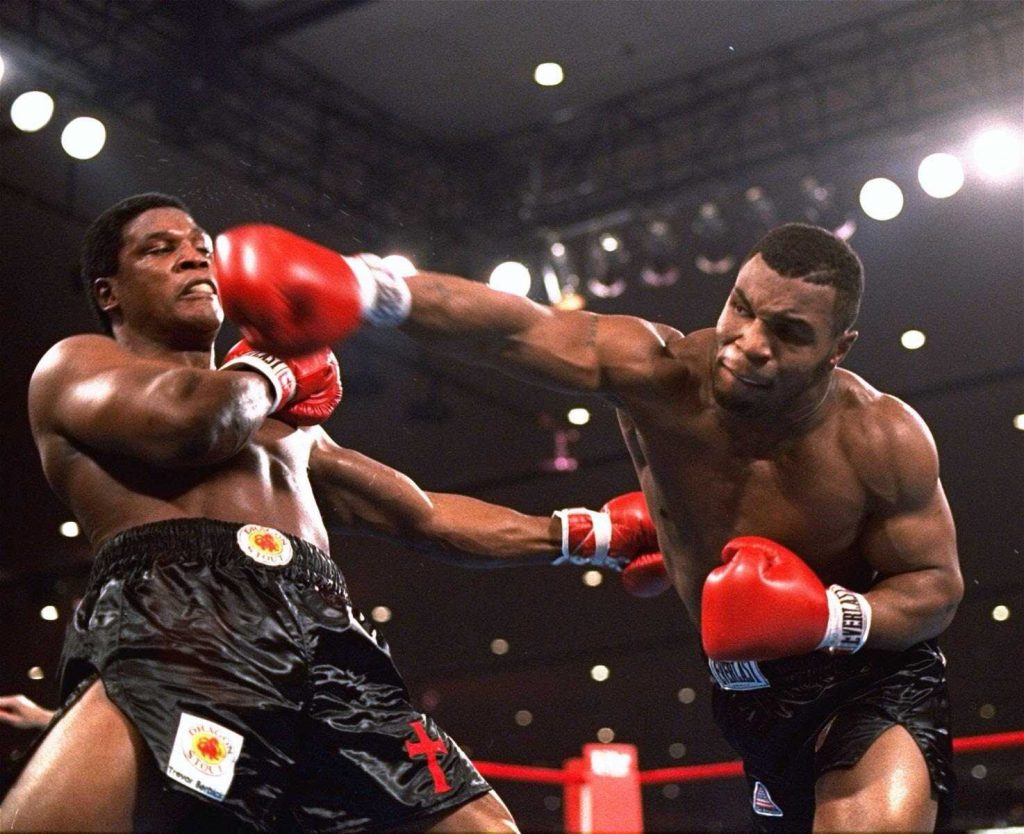Measuring your height and weight is common for almost every sport. Your reach is only measured in a few sports, but it is essential for boxers and other combat sports athletes. Boxing reach can make a difference between winning and losing for a boxer.
If you are new to boxing, you probably don’t know much about how to measure reach in boxing. So, how can one go about measuring boxing reach? Keep reading, and you will learn more on the subject shortly.
Some people believe that your reach is as same as your height. It is untrue in most cases. Your reach can be more and sometimes less in proportion to your size. Measuring it is the only way to find out exactly what it is.
Why is Boxing Reach Important in the First Place?
It is so because it has the potential to determine whether you win or lose in a boxing contest. In addition to the boxer’s weight and height, experts also note their reach. Usually, a boxer with a longer reach has a huge advantage because he can throw jabs at the opponent from a long distance. But, a longer reach alone isn’t enough to guarantee you success. Your training and overall skillset also count a lot.
Besides boxers’ height, other factors like their chest width and arms’ span also determine their potential reach.
So, there is a possibility of shorter boxers having a longer reach, although it would be pretty rare.
How is Boxing Reach Different than Arm Length?
Whether boxing or MMA, reach and arm length are equally important metrics. However, there’s no need to confuse the two.
One of the basic differences is that the size of the boxer’s shoulders and the chest is considered in measuring their reach, but not in arm length.
Arm length only involves the measurement of the distance between the fist and armpit.
Experts believe that arm length bears more consistency as a metric, not leaving much room for manipulation, unlike reach. Manipulating reach is as easy as shrugging your shoulders.
How Do You Measure Reach in Boxing?
To measure boxing reach, you need to have a friend around because you can’t do it alone. Once you have a friend ready to help, you can go ahead with it.
Measuring Your Boxing Reach Method 1 of 2
Step 1

- Stand up next to a wall and put your back on it.
- Keep your back as straight as possible.
- This is the most conventional way to measure the reach.
Step 2

- Now, you will spread your arms horizontally while touching the wall.
- Keep your palms facing away from the wall.
- Stretch the arms as wide as possible to get an accurate measurement.
Step 3

- Your placement on the wall should be as such that one of your arms should be against a corner.
- This will make the measuring process a lot easier.
Step 4

- Ask your friend to make a mark on the wall where the tip of fingers falls, the arm away from the corner.
Step 5

- Get a measuring tape and measure from the corner to the mark made on the wall.
- The resulting measurement is your reach.
Measuring Your Boxing Reach Method 2 of 2 (Interpreting Range Measurements)
Step 1

- Measure your size. Stand on your feet with your back flat against a wall.
Step 2

- Ask your friend to make a mark on the wall at head level.
Step 3

- Stand away from the wall and with the help of your friend, measure directly from the floor to the mark to get your size.
- Be sure to use the same units of measurement (feet, inches, centimeters, or meters) that you used to measure your reach.
Step 4

- Divide your reach measurement by your height to express your arm reach as a ratio. If the result is greater than 1, your reach is greater than your height, which is also known as a positive APE Index.
Step 5

- Subtract your height measurement from your span measurement to get a more concrete “APE Index” result.
If the result is positive, your boxing reach is longer than your height. This is usually expressed as a positive APE Index, i.e., +1, +2, etc. The number expresses how many units you reach is longer than your height. (So a person with an APE Index rating +1 could have a reach 2.5 cm longer than their height.)
A “negative APE Index” is expressed the same way but with a minus or negative sign instead of a plus sign.
Advantages of a Superior Boxing Reach
Now that you know what your reach is, you should know the advantages it can give you when you step inside a ring.
Before we begin, just remember that nothing beats hard work and skill when you are training to be a boxer. But it doesn’t hurt to have a more extended reach than your opponent.
1. Outside Boxing
Many boxers are taught to stay on the inside to find an opening for a power punch.
If you have a longer reach, you can box outside and still be effective.
You can use your reach to jab the opponent repeatedly. It will eventually frustrate them, and they will come close to landing some punches.
You can also learn how to develop a good jab so that you can outscore your opponent when they move in. As soon as they step close, you will have a better chance of landing your punches.
Double up on the jab, and you will get the opening to land a power shot.
2. Defensive Use
An advantageous reach is also useful for defense in boxing.
You can pull out the jab when you are dealing with a boxer who likes to come at you aggressively and just won’t let you breathe.
With your superior reach, you will make them back off with jabs or suffer the consequences.
If the opponent doesn’t back off, you can use the jab and head movement to set up some power punches.
You can check out our guide for basic boxing movements to learn how to move your head defensively and offensively.
The advantages don’t mean that you can get lazy inside the ring.
Some fighters tend to use the jab to keep the opponent at bay and forget to move their head and body.
You can get yourself into serious trouble if you keep doing the same thing for ten or so rounds.
Don’t fall into a comfort zone. Move, jab, and stick with your plan for the opponent.
Why is it Hard to Fight Taller Opponents with Longer Reach?
Before we get to the skills, you’ll need and the strategy to implement, let’s discuss why fighting taller opponents with better range than yours is a challenge.

1. You Can’t Reach Them, But They Can
One of the most frustrating aspects of encountering a taller opponent is that their range is usually longer as well. It means if they keep a good distance, they can throw punches at you without worrying about getting hit.
Being the tallest guy, you don’t have to put yourself in a position where you have to “take one to give one”. Even half an inch of range can be the difference between you being able to hit your opponent without getting hit back. When you multiply that, it gets a little more complicated.
2. They Can See You Coming From Afar
Not being able to reach your competitor is terrible, but your inability to land punches even when you’re in reach is even worse. Being shorter, it’s much easier to get countered due to missed shots.
Taller boxers are able to evade your shots because they have much more time to prepare against what’s coming their way, irrespective of your speed.
That’s because before you throw a punch, you have to cut the distance, which creates two actions that have to take place.
First, you approach. Second, you shoot. It aids them in seeing you come on the attack. So, they can plan to defend, counter your shot, or time your entry.
3. Countering Their Moves is Harder
Countering the advances of a taller opponent becomes too much of an ask sometimes because of the reasons stated above. They can reach you without much effort, but you can’t get them. So, even when they are in attack range to hit you, you might not be in attack range to hit them back.
How to Tackle Opponents with Longer Boxing Reach?

Having longer boxing reach is surely an advantage, but it doesn’t mean you can’t do anything to work your way around taller boxers. More so when you have RDX sports in your corner.
1. Good Footwork
The first and most important skill you need is good footwork and agility. You’ll have to constantly cut the distance when you’re fighting someone taller.
Whether entering, exiting, or circling your opponent, you’ll need to manage your feet quickly and efficiently.
Much of the strategy revolves around rapidly advancing on your opponent, cutting the distance, and staying within attack range. It all starts with quick feet.
2. Hand Speed
Once you’ve cut the distance, make sure you have ample hand speed to land timely punches on your target.
Taller opponents have a size advantage, enabling them to see you coming much earlier. So, to eliminate that, you’ll have to have quick hands on top of quick feet.
A lot of what you’ll have to do will involve hitting your opponent mid-attack or being quick enough to lure them in with punches and counterattacks.
3. Good Timing
If there’s one thing that may outsmart speed, it’s timing. It is going to help you tremendously in a fight against a taller opponent who has a reach or height advantage.
You’ll have to know when to step in, when to throw, when to fake and when to counter.
4. Good Feints
Feinting is the art of pretending to be punching just to see where your opponent makes mistakes or to see how he will react to that particular punch.
A good feint usually comes with minimal energy expenditure, which means minimal movement on your part but the maximum response from your opponent.
Conclusion
To sum it up, reach plays a vital role in the overall performance of boxers. Having a longer reach as compared to your competitor is an added bonus. However, it’s not the only way to guarantee success in a fight.
Irrespective of what your reach is, you must be knowledgeable enough to utilize it optimally. Ultimately, your boxing skills, strength, endurance, and punching power will collectively determine your success.






1 Comment
Wow that was strange. I just wrote an very long comment but after I clicked submit my comment didn’t show up. Grrrr… well I’m not writing all that over again. Anyway, just wanted to say wonderful blog!